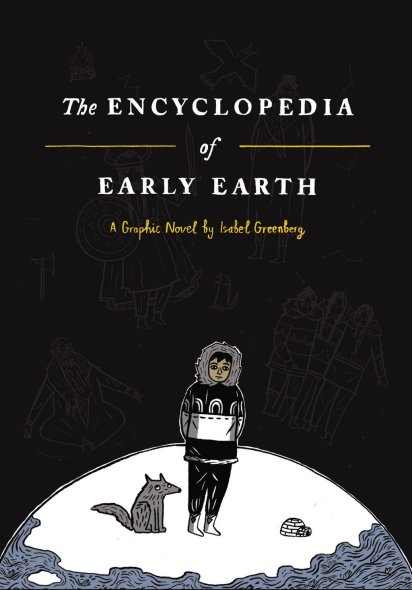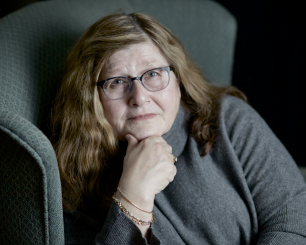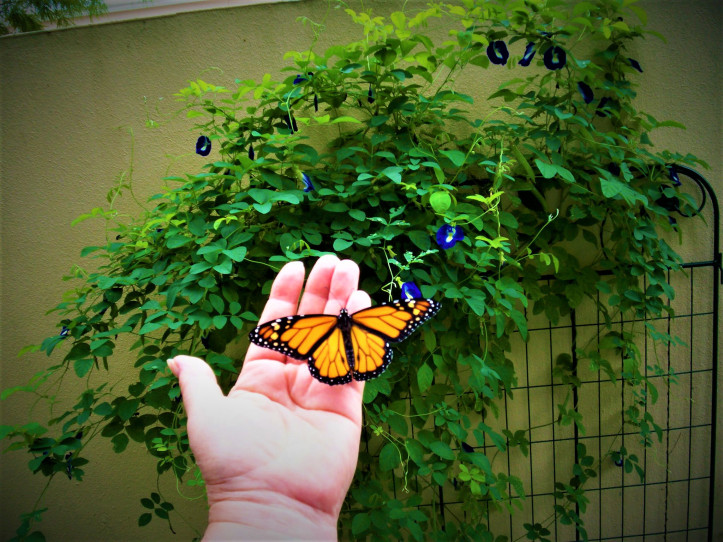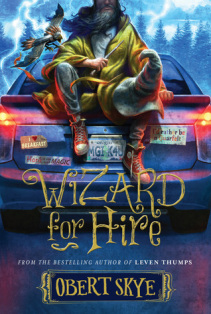

It was our pleasure to interview award-winning graphic novelist Isabel Greenberg, a young British talent whose tales from the fictional world of Early Earth create spiritual, historical, and mythic space for women. We talked about new projects, the role that sisterhood plays in her work, and snagged a few book recommendations.
RV: Let’s start with the present — I was very excited to see your illustrations book-ending Caroline Crampton’s e-newsletter in early September. What other projects are in the mix for you right now?
IG: Well I’m working on a few different projects. I’m doing a kids comic with my sister (she’s writing it) about Athena the Greek Goddess. It’s sort of a compilation of all the myths she appears in. Kind of showing her as a secret hero pulling the strings behind lots of the well known stories. That’s coming out with Bloomsbury. I’m also about to get started on a new graphic novel. I won’t say too much now as it’s very early in the process, but i can say that it’s about the Brontes and the imaginary worlds they invented as children. AND I’m also completing my masters at the moment, so I’m working on some animated experiments for that! So a lot going on.
RV: Your graphic novels draw heavily from fairy tales and world mythology, which give them a wonderful, fantastical quality. I’m curious about other influences that might be bubbling under the surface. Who or what has inspired you to create, over the years?
IG: Well I think my love of stories began pretty young. I was a serious reader as a kid (And I still am!) I read a lot of fantasy growing up, I loved JRR Tolkein and Ursula LeGuin, Phillip Pullman, Rosemary Sutcliffe, Joan Aitkin and Diana Wynne Jones. I think those books I read as a child continue to influence me to this day. I feel very strongly that the story and the words are as important, if not more so, than the art. I want to write graphic novels that are as engrossing as novels.
RV: One of my favorite storylines in One Hundred Nights of Hero is the narrative about the three sister moons, who weave in and out of the tale in surprising ways. Both of your graphic novels have this nested quality, where stories dance around each other, which makes me curious about what the writing process look like for you. Do you map out your narratives, or do you find that shorter works nestle together into longer books? How do you craft these complicated fables?
IG: I tend to write things out as prose short stories first, then I start to thumbnail them into panels. I’ll cut out a lot of words, add in more dialogue, change things quite a lot. I let the narratives build up piece-meal, and write them as they come. This means I do end up shuffling and cutting and changing a lot, as they grow. I am getting much better at planning out the narratives though. With Hero, I had a very good idea how the overriding narrative would weave through the nested stories. Whereas I think the Encyclopedia has more of the feel of an anthology of stories.
RV: Your books discuss female power as related to storytelling, and create alternative histories for women that I find really exciting. Early Earth, after all, was created by a girl goddess. How do you think about your work in relation to feminist theories and spaces?
IG: I am very pleased that that my work has been flagged up as feminist. I think my primary goal in tackling these stories from a feminist angle was that I felt like in so many folk tales and legends the women get a pretty rough deal. I liked the idea of creating a history of a world that wasn’t entirely dominated by the tales of men.
RV: I’m interested in the way you use color and light to set the tone for the various nested stories in both One Hundred Nights of Hero and Encyclopedia of Early Earth. Could you talk a bit about your illustration style, and how it’s changed and morphed as you’ve grown as an artist?
IG: I think my style has loosened up as I’ve become a more confident draftsperson. When I look back at Early Earth, I think its quite tight and controlled, whereas Hero I think has a looser quality. I wanted to use more texture, more brushwork, be more bold. And I think this helped me be bolder with my colour and tone too.
RV: I want to talk to you about sisterhood. I believe you’ve been working with your sister recently, illustrating the the Discover! Book series on ancient history, and both of your graphic novels deal with the complicated, loving, sometimes painful relationships between sisters. What draws you to write about sisterhood, and how has your own working relationship with your sister impacted your creative life?
IG: ‘Sisters’ is a topic I find endlessly fascinating! Me and my sister are extremely close now, but when we were kids growing up we argued horribly, and really didn’t get along. Now I can’t imagine not calling her about three times a day, and we never argue, but I think there was a time when we were young when our parents probably worried we might grow up hating each other! The main problem was we are five years apart, and once that age gap closed (by the time I was 20 and she was 15) everything changed.People’s relationships with their siblings can be so varied; For some people siblings are strangers they happen to be related to, and for others a sibling is a close friend with whom you share an incredibly intense familial bond. Siblings who work together is something that is of particular interest to me, as me and my sister do. I think that’s why I’m so interested in the Brontes at the moment.
RV: And the final question! We’re always looking to expand our reading list at Drizzle. Whose work have you enjoyed reading in the last few months?
IG: Oooh ok. Well, novels I’ve enjoyed this year…: ‘The Lesser Bohemians by Eimar McBride.’ ‘The Argonauts by Maggie Nelson.’ ‘The Member of the Wedding by Carson McCullers.’
Graphic novels/comics I’ve enjoyed this year: ‘Collecting Sticks.’ by Joe Decie. ‘Geis’ by Alexis Deacon. ‘Saving Grace’ by Grace Wilson. ‘Spinning’ by Tillie Walden.
About the author:
Isabel Greenberg is a London based illustrator and writer. Her first graphic novel ‘The Encyclopedia of Early Earth’ was published in 2013 by Jonathan Cape in the UK, Random House in Canada and Little Brown in the US. It has since been translated into French, Spanish, Korean and Chinese.
It was nominated for two Eisner awards, won the Best Book catagory at the British comic awards, was one of NPR’s 100 books of the year, was the Guradian’s graphic novel pick of the month and was in the New York Times Graphic Books best seller list.
Her second graphic novel ‘The One Hundred Nights of Hero’ came out in September 2016, and also made the New York Times Graphic books best seller list. It was also one of the Observers best graphic books of 2016
Advertisements Share this:




